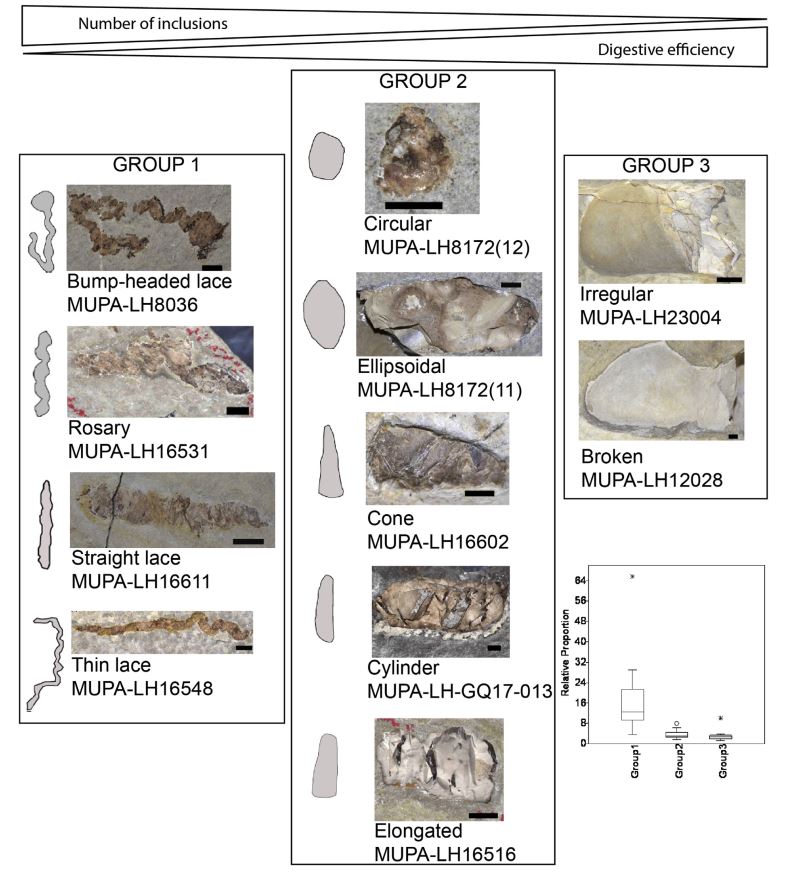Investigation
Food web reconstruction through isotopic compositions of fossil faeces: Insights into the ecology of a late Barremian freshwater ecosystem (Las Hoyas, Cuenca, Spain)
Sandra Barrios-de Pedro, Karyne M. Rogers, Paloma Alcorlo, Ángela D. Buscalioni
A total of 54 coprolites with different morphologies from the Konservat-Lagerstatte € of Las Hoyas (upper Barremian, Cuenca, Spain) were analysed for stable isotopes (d15N and d13Corg) to examine the food-web structure of this ancient wetland. The Las Hoyas wetland exhibited wetter and drier periods that indicated water table oscillations. Differences in the d15N values of coprolites collected from wetter and drier facies were probably due to different baseline d15N values during the dry periods (higher) compared to those of the wetter periods. The d13Corg values indicated that aquatic food resources were the most commonly used by the animals from Las Hoyas. Assuming a Trophic Enrichment Factor (TEF) of þ 2.5 ‰, three trophic levels were established for the coprolite association. All the specimens of circular, ellipsoidal, elongated, and rosary morphotypes fell into the same trophic level, whereas other morphotypes (cylinder, irregular, and thin lace) exhibited a wide range of d15N values and the highest % N concentrations. The covariation between d15N and d13Corg values describe a wide spectrum of values across the middle and upper part of the ecosystem's food web structure, suggesting that the Las Hoyas ecosystem hosted specialist feeders and omnivorous and/or opportunistic feeders, the latter being the majority. The variation of d15N values within the specimens of some morphotypes showed that the larger coprolites do not exhibit any correspondence between the faecal size and d15N values.
Food web reconstruction through isotopic compositions of fossil faeces: Insights into the ecology of a late Barremian freshwater ecosystem (Las Hoyas, Cuenca, Spain)
